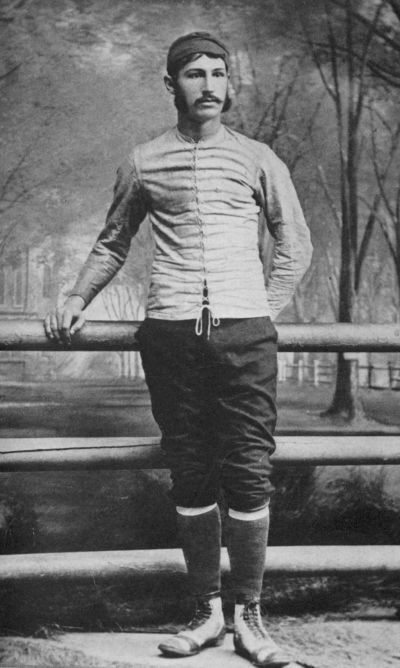|
Donald Kagan
Donald Kagan (; May 1, 1932August 6, 2021) was a Lithuanian-born American historian and classicist at Yale University specializing in ancient Greece, notable for his four-volume history of the Peloponnesian War. He formerly taught in the Department of History at Cornell University. Kagan was considered among the foremost American scholars of Greek history. Early life and education Kagan was born in Kuršėnai, Lithuania, on May 1, 1932. His father, Shmuel, died before Kagan turned two years old, and his mother, Leah (Benjamin), consequently emigrated to the United States with Kagan and his sister. He grew up in the Brownsville section of Brooklyn. He attended Thomas Jefferson High School, where he played football, before becoming the first person in his family to go to college. He graduated from Brooklyn College in 1954, received an MA in classics from Brown University in 1955, and a PhD in history from the Ohio State University in 1958. Career Once a liberal Democrat, ... [...More Info...] [...Related Items...] OR: [Wikipedia] [Google] [Baidu] |
Kuršėnai
Kuršėnai (; Samogitian dialect, Samogitian: ''Koršienā''; yi, קורשאַן ''Kurshon''; german: Kurschenen; pl, Kurszany; lv, Kuršēni) is the twenty-fifth largest city in Lithuania. According to the 2020 estimate, it had 10,829 residents. History The town's name was first documented in the 16th century. According to historian , its name is derived from word ''kuršis'' (Curonians, Curonian). However, according to folk etymology, the town didn't have a name for a long time. But, one summer day the river Venta flooded and washed all hay bales which were standing at the river banks. People started questioning each other: where is the hay? where is the hay? („Kur šienai? Kur šienai?“). Since then, the town name stayed as Kuršėnai. Since a clay that is ideal for fine ceramics was detected near Kuršėnai, pottery has long been thriving in the city. In the last century, Kuršėnai became famous for fairs abundant in earthenware. Kuršėnai is called the “Capital of ... [...More Info...] [...Related Items...] OR: [Wikipedia] [Google] [Baidu] |
Historian
A historian is a person who studies and writes about the past and is regarded as an authority on it. Historians are concerned with the continuous, methodical narrative and research of past events as relating to the human race; as well as the study of all history in time. Some historians are recognized by publications or training and experience.Herman, A. M. (1998). Occupational outlook handbook: 1998–99 edition. Indianapolis: JIST Works. Page 525. "Historian" became a professional occupation in the late nineteenth century as research universities were emerging in Germany and elsewhere. Objectivity During the ''Irving v Penguin Books and Lipstadt'' trial, people became aware that the court needed to identify what was an "objective historian" in the same vein as the reasonable person, and reminiscent of the standard traditionally used in English law of "the man on the Clapham omnibus". This was necessary so that there would be a legal benchmark to compare and contrast the scholar ... [...More Info...] [...Related Items...] OR: [Wikipedia] [Google] [Baidu] |
Willard Straight Hall
Willard Straight Hall is the student union building on the central campus of Cornell University in Ithaca, New York. It is located on Campus Road, adjacent to the Ho Plaza and Cornell Health. Background The construction of Willard Straight Hall was initiated by Willard Dickerman Straight's widow, Dorothy Payne Whitney, as a memorial to her husband. The building was intended to lead to "the enrichment of the human contacts of student life", according to the speech Straight gave at the dedication of the hall. Cornell historian Corey Earle notes that in the era Willard Straight Hall was constructed, "it was unusual to have a building with no academic purpose". The concept of a "student union" building was a recent invention at the time—the first student union in North America, Houston Hall at the University of Pennsylvania, had opened in 1896. When Willard Straight Hall opened its doors in 1925, it was still one of only a few such structures in the country dedicated to student li ... [...More Info...] [...Related Items...] OR: [Wikipedia] [Google] [Baidu] |
C-SPAN
Cable-Satellite Public Affairs Network (C-SPAN ) is an American cable and satellite television network that was created in 1979 by the cable television industry as a nonprofit public service. It televises many proceedings of the United States federal government, as well as other public affairs programming. The C-SPAN network includes the television channels C-SPAN (focusing on the U.S. House of Representatives), C-SPAN2 (focusing on the U.S. Senate), and C-SPAN3 (airing other government hearings and related programming), the radio station WCSP-FM, and a group of websites which provide streaming media and archives of C-SPAN programs. C-SPAN's television channels are available to approximately 100 million cable and satellite households within the United States, while WCSP-FM is broadcast on FM radio in Washington, D.C., and is available throughout the U.S. on SiriusXM, via Internet streaming, and globally through apps for iOS and Android devices. The network televises U.S. poli ... [...More Info...] [...Related Items...] OR: [Wikipedia] [Google] [Baidu] |
Classics
Classics or classical studies is the study of classical antiquity. In the Western world, classics traditionally refers to the study of Classical Greek and Roman literature and their related original languages, Ancient Greek and Latin. Classics also includes Greco-Roman philosophy, history, archaeology, anthropology, art, mythology and society as secondary subjects. In Western civilization, the study of the Greek and Roman classics was traditionally considered to be the foundation of the humanities, and has, therefore, traditionally been the cornerstone of a typical elite European education. Etymology The word ''classics'' is derived from the Latin adjective '' classicus'', meaning "belonging to the highest class of citizens." The word was originally used to describe the members of the Patricians, the highest class in ancient Rome. By the 2nd century AD the word was used in literary criticism to describe writers of the highest quality. For example, Aulus Gellius, in his ''Att ... [...More Info...] [...Related Items...] OR: [Wikipedia] [Google] [Baidu] |
American Football
American football (referred to simply as football in the United States and Canada), also known as gridiron, is a team sport played by two teams of eleven players on a rectangular field with goalposts at each end. The offense, the team with possession of the oval-shaped football, attempts to advance down the field by running with the ball or passing it, while the defense, the team without possession of the ball, aims to stop the offense's advance and to take control of the ball for themselves. The offense must advance at least ten yards in four downs or plays; if they fail, they turn over the football to the defense, but if they succeed, they are given a new set of four downs to continue the drive. Points are scored primarily by advancing the ball into the opposing team's end zone for a touchdown or kicking the ball through the opponent's goalposts for a field goal. The team with the most points at the end of a game wins. American football evolved in the United States, ... [...More Info...] [...Related Items...] OR: [Wikipedia] [Google] [Baidu] |
Thomas Jefferson High School (Brooklyn)
Thomas Jefferson High School was a high school in the East New York section of Brooklyn, New York. It was the alma mater of many people who grew up in the Great Depression and World War II and rose to prominence in the arts, literature, and other fields. In 2007, the New York City Department of Education closed the school and broke it into several small schools because of low graduation rates. History Thomas Jefferson High School, located at 400 Pennsylvania Avenue, had its groundbreaking in 1922 with New York City mayor John Francis Hylan officiating. Elias Lieberman (1883-1969), American poet, writer and educator, known for the 1916 poem "I Am an American,” served as principal from 1924 to 1940. Alumni of his time include movie star and comedian Danny Kaye (who did not graduate) and songwriter Jack Lawrence. Additionally, Thomas Jefferson was one of seven public high schools in New York to receive a M. P. Moller pipe organ in 1926. The instrument was removed and discarded i ... [...More Info...] [...Related Items...] OR: [Wikipedia] [Google] [Baidu] |
Brooklyn
Brooklyn () is a borough of New York City, coextensive with Kings County, in the U.S. state of New York. Kings County is the most populous county in the State of New York, and the second-most densely populated county in the United States, behind New York County (Manhattan). Brooklyn is also New York City's most populous borough,2010 Gazetteer for New York State . Retrieved September 18, 2016. with 2,736,074 residents in 2020. Named after the Dutch village of Breukelen, Brooklyn is located on the w ... [...More Info...] [...Related Items...] OR: [Wikipedia] [Google] [Baidu] |
Brownsville, Brooklyn
Brownsville is a residential neighborhood in eastern Brooklyn in New York City. The neighborhood is generally bordered by Crown Heights to the northwest; Bedford–Stuyvesant and Cypress Hills to the north; East New York to the east; Canarsie to the south; and East Flatbush to the west. The area that comprises Brownsville has 58,300 residents as of the 2010 United States Census, with an estimated population of 128,369 residents in 2019. Founded in its current incarnation in 1858, Brownsville was initially a settlement composed of Jewish factory workers. The neighborhood underwent a major demographic change in the 1950s that saw an influx of African-American residents. Since the late 20th century, Brownsville has consistently held one of the highest poverty and crime rates of any neighborhood in New York City. Brownsville is part of Brooklyn Community District 16, and its primary ZIP Code is 11212. It is patrolled by the 73rd Precinct of the New York City Police Department. ... [...More Info...] [...Related Items...] OR: [Wikipedia] [Google] [Baidu] |
Lithuania
Lithuania (; lt, Lietuva ), officially the Republic of Lithuania ( lt, Lietuvos Respublika, links=no ), is a country in the Baltic region of Europe. It is one of three Baltic states and lies on the eastern shore of the Baltic Sea. Lithuania shares land borders with Latvia to the north, Belarus to the east and south, Poland to the south, and Russia to the southwest. It has a Maritime boundary, maritime border with Sweden to the west on the Baltic Sea. Lithuania covers an area of , with a population of 2.8 million. Its capital and largest city is Vilnius; other major cities are Kaunas and Klaipėda. Lithuanians belong to the ethno-linguistic group of the Balts and speak Lithuanian language, Lithuanian, one of only a few living Baltic languages. For millennia the southeastern shores of the Baltic Sea were inhabited by various Balts, Baltic tribes. In the 1230s, Lithuanian lands were united by Mindaugas, Monarchy of Lithuania, becoming king and founding the Kingdom of Lithuania ... [...More Info...] [...Related Items...] OR: [Wikipedia] [Google] [Baidu] |
History Of Greece
The history of Greece encompasses the history of the territory of the modern nation-state of Greece as well as that of the Greek people and the areas they inhabited and ruled historically. The scope of Greek habitation and rule has varied throughout the ages and as a result, the history of Greece is similarly elastic in what it includes. Generally, the history of Greece is divided into the following periods: * Paleolithic Greece starting 3.3 million years ago and ending in 13,000 BC. Significant geomorphological and climatic changes were noted in the modern Greek area which were definitive for the fauna and flora as well as the survival of the ''Homo sapiens'' in the region. * Mesolithic Greece starting in 13,000 BC and ending in 7000 BC, it was a period of long and slow development of the primitive human "proto-communities". *Neolithic Greece; covering a period beginning with the establishment of agricultural societies in 7000 BC and ending in BC. It was a vital part of ... [...More Info...] [...Related Items...] OR: [Wikipedia] [Google] [Baidu] |







